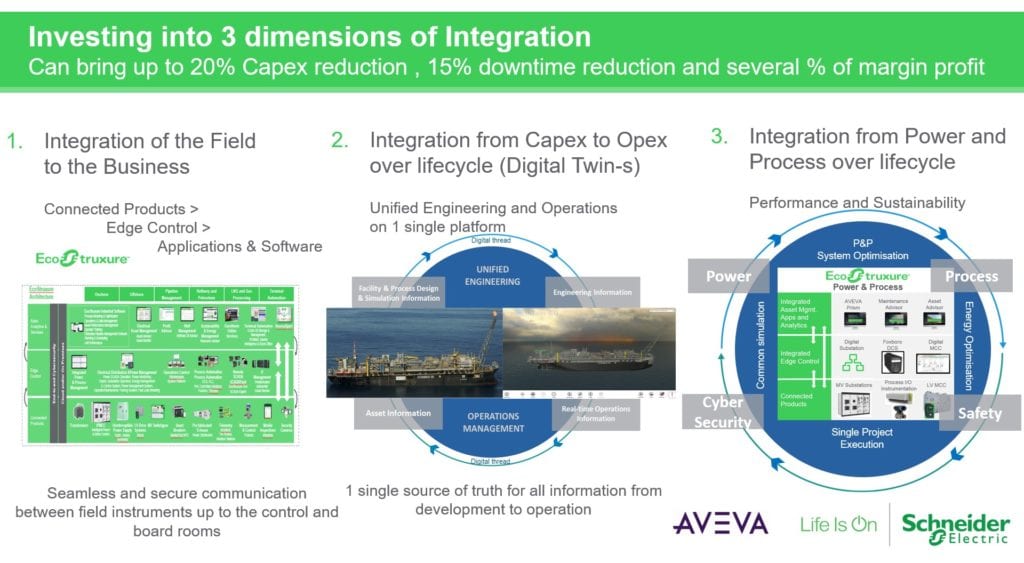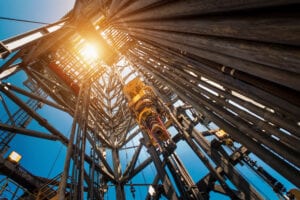This audio was created using Microsoft Azure Speech Services
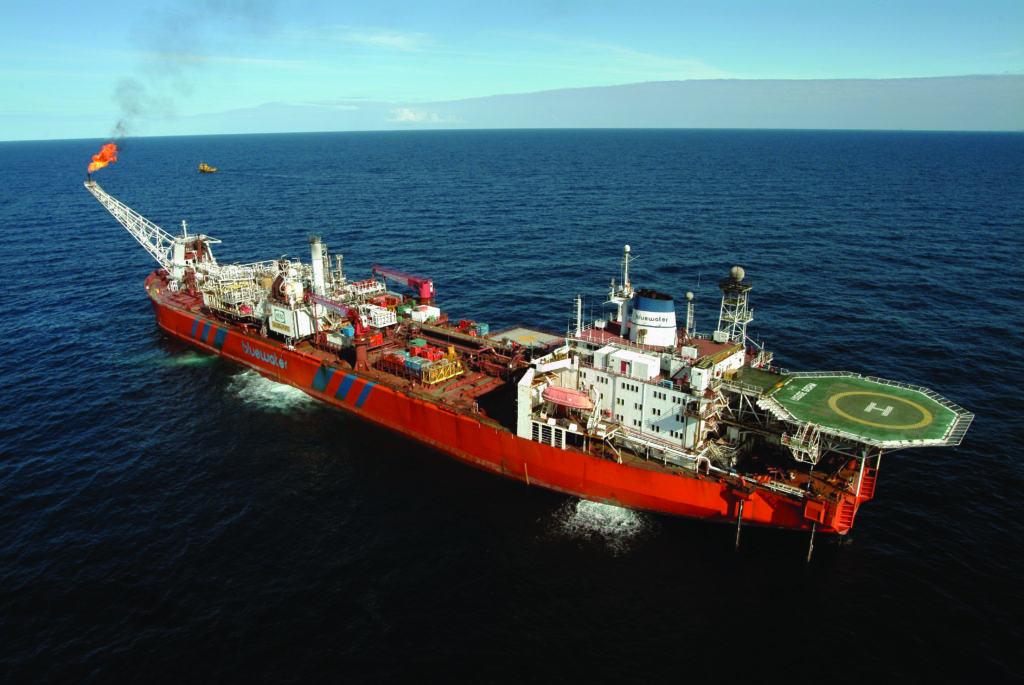 FPSO: How to accelerate developments, reduce costs, reduce staff on board and at the same time increase safety and reliability?
FPSO: How to accelerate developments, reduce costs, reduce staff on board and at the same time increase safety and reliability?
As we are facing a hugely challenging time in both our professional and personal lives, it is so evident that digitization is transforming our daily interactions and bridging gaps in personal connection, learning, and the way we do business. Once this storm has passed, there is the potential that we will have completely different work environment, where digital interactions will have even greater importance on the way we do business.
In Floating Production projects, the challenges are great, as we are facing a new oil price level, with the Brent reaching around 30USD. I will not discuss why the price is at that level, there a many analysis done already, but how the use partnership with suppliers and the technology already available can transform the way FPSO (Floating, Production, Storage and Offloading) are design, build and operate.
Let’s take a look on the key FPSO Challenges:
- Reducing costs
- Choosing appropriate development concepts;
- Reuse proven concepts;
- Standardization
- Accelerate developments Rightsizing topsides
- 26 months from sanction to first oil (used to be 36 months);
- Early engagement of suppliers
- Redeploy laid up units
When analyzing costs, most of the actions have been done to standardize projects, getting some supplier early engagement and partnership and being very successful on reducing the time to first oil. But still there is a huge space of optimization. Same questions must be raised. “Are we optimizing man hours in project and design?”, “Are we engaging partners at the right time, using their expertise? “Are we being creative and using the new technologies to optimize more and more? Are we being able to optimize procurement and execution?
The answer for all questions is that we are not doing enough. Standardization is fantastic as a first step, but it can block the engagement of new suppliers’ expertise and technologies. The early engagement of experts from partners and the digitalization of the design are key for project optimization and to reduce the project man hours used in the project.
Today there solid and tested tools to developed Unified Engineering & Operations across the Digital Twin(s). In the project you can:
- Create & develop a single Information management system for the project Lifecycle comprising: Process simulations, flowsheets, data sheets, 3D models, PFD, P&IDs, Isometrics
- Trust Correct & Updated data – no duplication of data into multiple software who don’t speak to each other
- Allow concurrent engineering work with connected work processes
Technology unifies the asset and operations life cycle.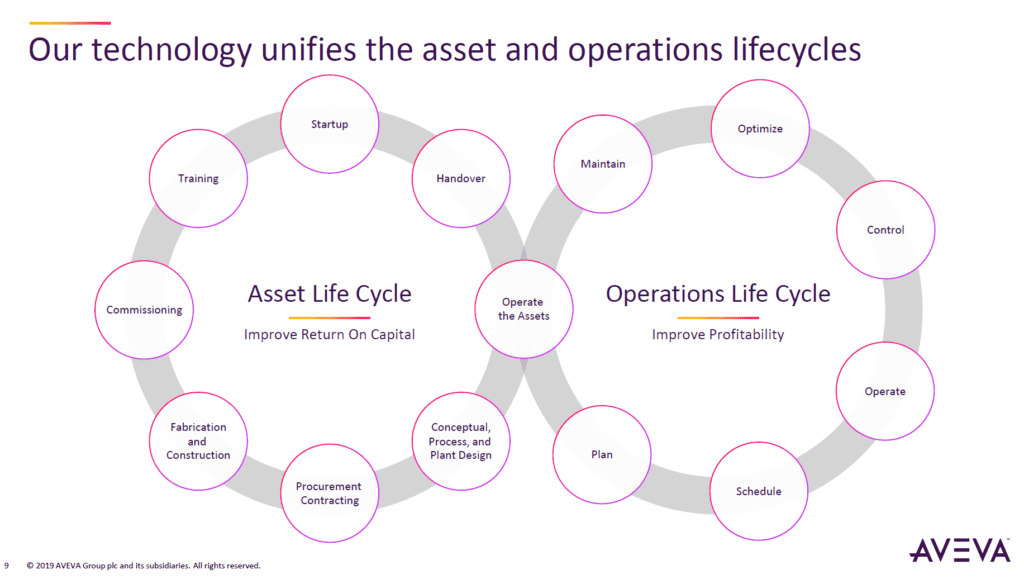
This unified engineering process will allow the de-silo work processes along project lifecycle, the means that from the basic design, engineering can use the same platform for the detailed design. The same platform will be used for partner to optimize design and procurement will also interface with suppliers using the same platform. this a huge time saving and man-hour optimization on the project design.
How about the construction itself? Again, the use of a unified engineering platform is key. You can reduce your staff in the shipyard, by having your partners on the hull and the topside modules construction using the same platform. You will improve safety and drastically optimized time to design approval and project management man-hour.
So, as we can see, a unified platform will reduce costs and accelerate developments, reducing even more the time to first oil, a key asset for FID (Final Investment Decision) approval and projects profitability. Also, with the use of technology and early engagement of partners experts for design optimization, you will be able to choose appropriate development concepts and be accurate on rightsizing the topsides, again a key asset for FID and project profitability.
The power of this platform is also on the integration between design and operations with a full integrated design platform, known as Digital Twin, the FPSO built is ready to take advantage on optimization of operations.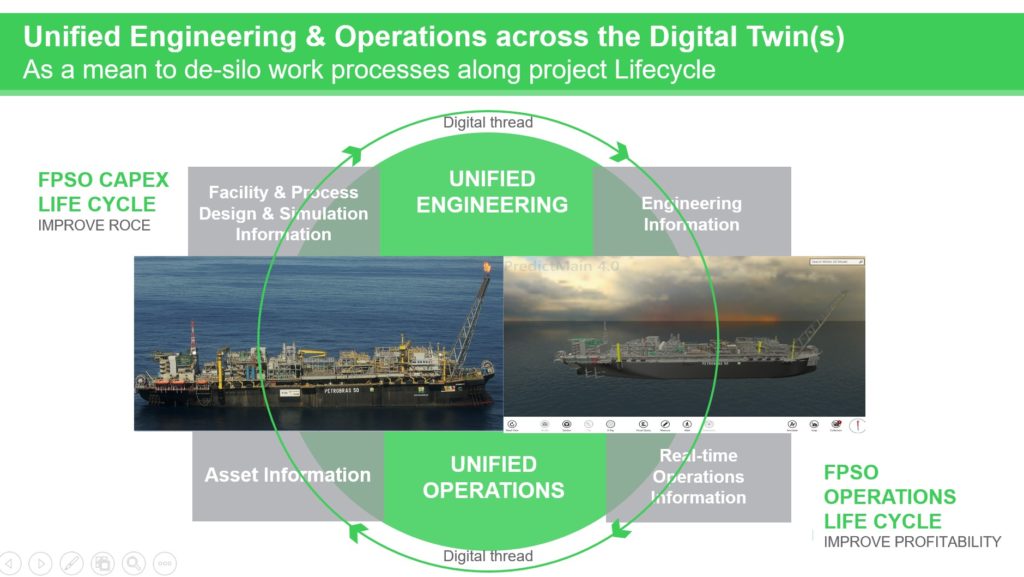
The availability of an accurate project information will allow the operations to easily connect the equipment information in real time. The engineering digital twin is sent over to the operator and provides instant access to the plant most up to date and relevant information. It becomes the platform on which the operator can improve its maintenance and operations by implementing visualization, predictive analytics, dynamic simulations for planning and yield optimization, connect workers with mobility solutions,
The use of predictive analytics allows a better maintenance planning, reducing the downtime drastically and reducing staff on board. The key future challenge is the unmanned or less manned offshore operations. If you extend to many FPSO operations you can plan your Unified Command Centre, that will provide an integrated view, or window, into all systems and sources across the value chain.
The technology is available for connection today (fibre optics, satellite, etc..) and new developments philosophies, like the edge computing allow even the predictive analytics and asset management systems to run locally allowing an accurate local maintenance and operations decision.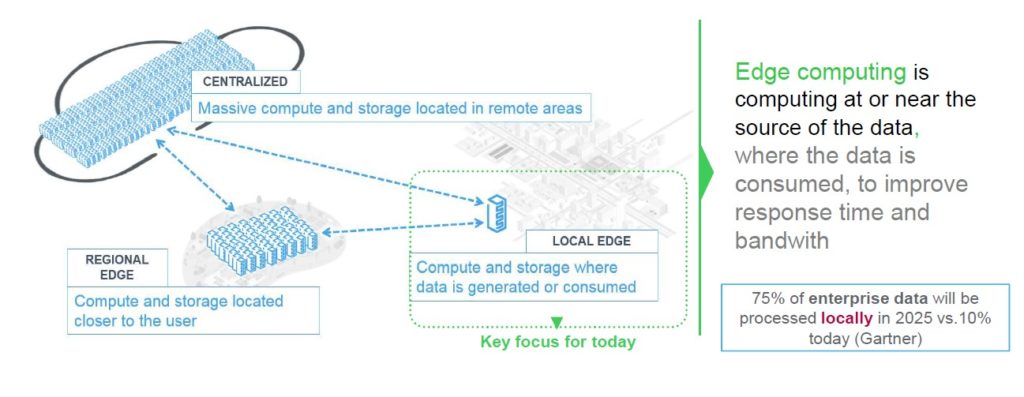
Not to forget to mention that having an accurate and relevant information of your operations will provide you the basis for a key sustainability asset analysis. As all FPSO design and operators have sustainable developments goals, you will be able to apply sustainability analytics tools that will allow to measure and act in your CO2 emission targets. And with a full integrated platform that will be extended to the whole supply chain of the FPSO for design to Operations. You will be able to measure all CO2 during the whole life cycle of your FPSO, define the right development goal and to act to be sure you can reach them.
In summary in this blog is proposing you to make a brainstorming on:
- How you are using your man-hour from design, build and operations;
- How you accurate you have been on using the project design and operations, you have;
- How integrated your project is through the life cycle and with your key partners;
- How you can challenge your standardisation by applying new technologies and new project design optimization in every project, by using the right tools without increasing man-hours in project;
- What are the internal behaviour and silos you must break;
- How you can deliver more safety and reliable operations while having the less man or no man onboard.
- How you can delivery a more safety, more reliable and sustainable operations
We, Schneider Electric together with AVEVA, have been developing technology and solutions for Oil&Gas market for more then 30 years specially on the FPSO business we have experts that can help you from design to operations.
We propose 3 dimensions of integration:
- Full connected products with a seamless and secure communication between field devices to control room (local or remote);
- A projects integration from design to operations (Digital Twin). Edge computing to run software analytics locally and/or remotely
- An Ecostruxure Power and Process solution. Power and Process system integration and optimization allowing asset performance management, energy and value chain optimisation.
To access more content on how the digitization of FPSOs is an essential means of reducing operational costs in offshore fields, explore our report on “Floating Innovation” hosted by Petroleum Economist.
